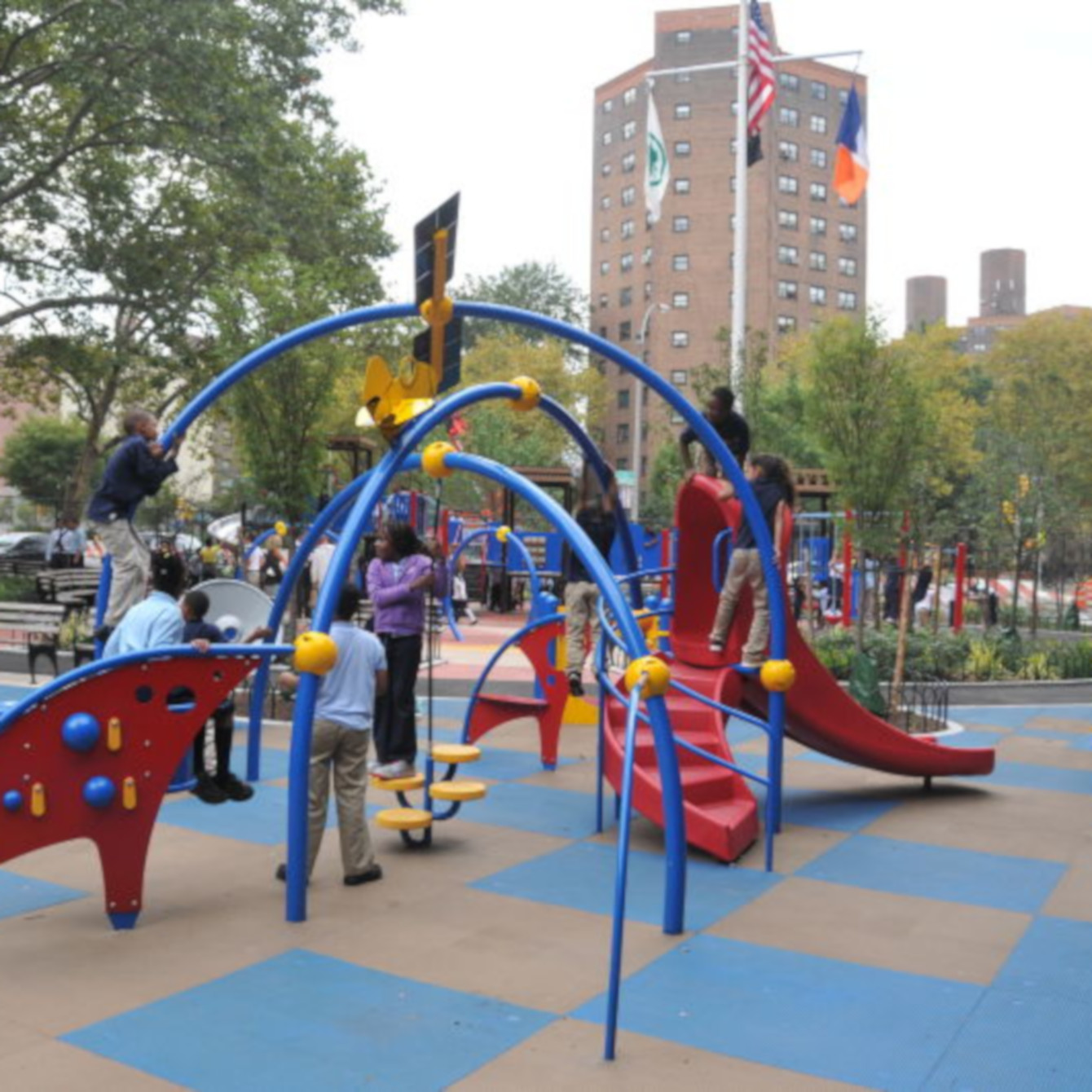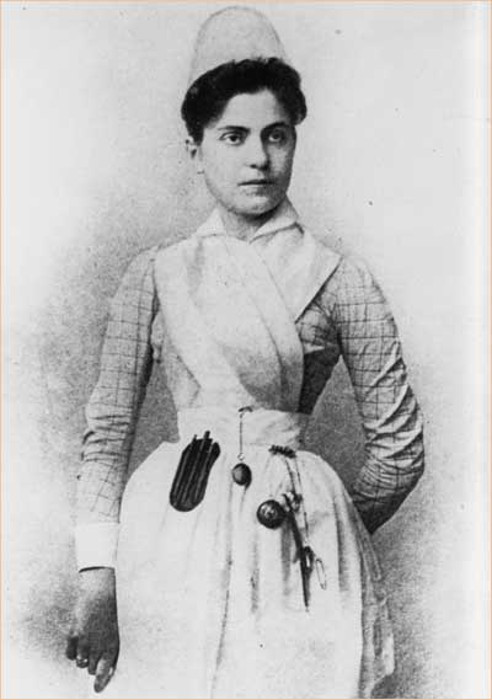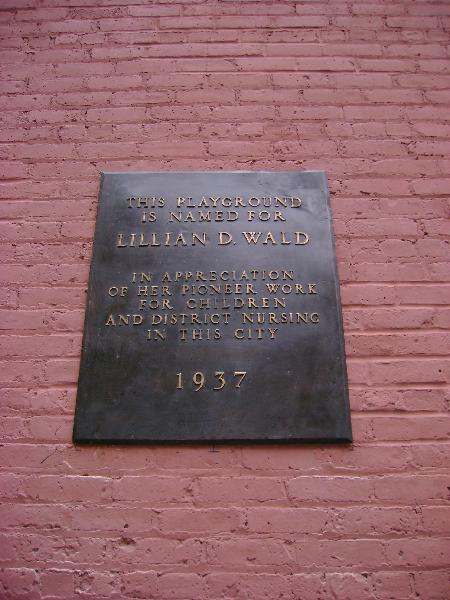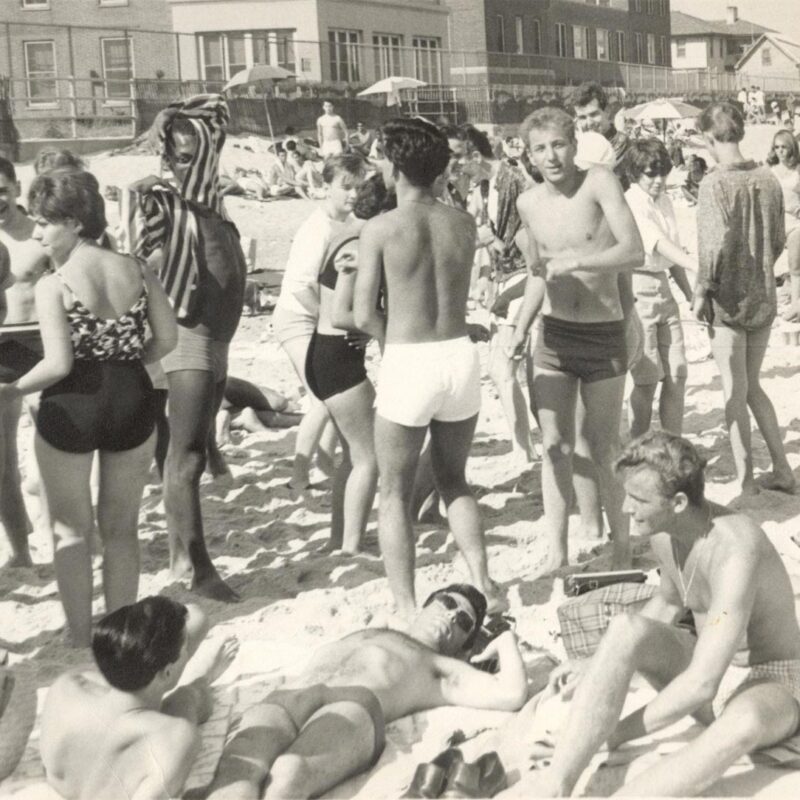
Lillian D. Wald Playground
overview
Many New York City public parks and playgrounds are named in honor of prominent figures in New York City and American history.
Lillian D. Wald Playground, in Manhattan, inadvertently honors an LGBT individual.
History
Many New York City public parks and playgrounds are named in honor of prominent figures in New York City and American history. The NYC LGBT Historic Sites Project compiled a list of public parks and playgrounds named after gay men, lesbians, and bisexuals, several of which intentionally honor an LGBT individual. This list includes Lillian D. Wald Playground, in Manhattan.
This Lower East Side playground was named in 1937 for Lillian Wald, thus inadvertently honoring an LGBT individual. The Henry Street Settlement was founded by progressive reformer Wald (1867-1940), with Mary Brewster, in 1893. Both were trained as public health nurses (a term coined by Wald) and moved to the Lower East Side to put their knowledge to practical use. The house at 265 Henry Street was the first permanent home of the organization when it relocated here in 1895. Wald, Brewster, and others provided nursing, at low or no cost, to the neighborhood’s poor in their homes, but would also visit those in need in other parts of the city. Nurses would also take local residents to other neighborhoods so they could experience life away from their cramped tenement district. Henry Street developed into a major Lower East Side institution, serving as a community center with educational and cultural offerings. In 1898, Wald, with Parks Commissioner Charles Stover, co-founded the Outdoor Recreation League, which sponsored the construction of neighborhood playgrounds.
The workers at Henry Street who lived (or settled) in the building were almost all middle-class women. Wald had relationships with other women who lived at Henry Street, as well as with several wealthy patrons, notably prominent social worker Mabel Hyde Kittredge and lawyer and theater producer Helen Arthur.
The land for this playground, which is located a few blocks away from the Henry Street Settlement, was acquired by the City in 1931. A rare exception in naming a property after a living person was made for Wald in 1937. She attended the opening ceremony on June 29, at which time a plaque was unveiled honoring her “pioneer work for children and district nursing.” After decades of neglect, the vacant lot was transformed into a playground with athletic facilities by Parks Department landscape architect Ricardo Hinkle. The 1937 plaque to Wald was also reinstalled.
Entry by Jay Shockley, project director (September 2021).
NOTE: Names above in bold indicate LGBT people.
Sources
Blanche Wiesen Cook, “Female Support Networks and Political Activism: Lillian Wald, Crystal Eastman, Emma Goldman,” in Nancy F. Cott and Elizabeth Hafkin Pleck, A Heritage of Her Own: Toward a New Social History of American Women (New York: Simon & Schuster, 1979).
Dell Richards, Superstars: Twelve Lesbians Who Changed the World (New York: Carroll & Graf, 1993).
Elizabeth Fee, PhD, and Liping Bu, PhD, “The Origins of Public Health Nursing: The Henry Street Visiting Nurse Service,” American Journal of Public Health (July 2010).
“Lillian D. Wald Playground,” NYC Department of Parks and Recreation, on.nyc.gov/3EO1S7N.
Paula Martinac, The Queerest Places: A Guide to Gay and Lesbian Historic Sites (New York: Henry Holt & Co., 1997).
Do you have more information about this site?
This project is enriched by your participation! Do you have your own images of this site? Or a story to share? Would you like to suggest a different historic site?


